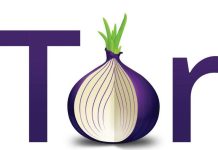What are e transfer scamsIntroduction to e transfer scams
In today’s digital age, electronic transfers have become a convenient and popular way to send money. Unfortunately, this convenience has also paved the way for scammers looking to exploit unsuspecting victims. E transfer scams are on the rise, leaving many individuals vulnerable to fraud during what should be simple transactions. Understanding these scams is essential in safeguarding your finances and personal information. Let’s unravel the world of e transfer scams and learn how to protect yourself from becoming their next target.
Types of e transfer scams
E transfer scams come in various forms, each designed to exploit unsuspecting victims. One common type is the phishing scam. Here, scammers send fake emails or texts posing as legitimate financial institutions. They trick you into clicking on malicious links that steal your personal information.
Another prevalent method involves romance scams. In these cases, con artists build emotional connections online and eventually request money through e transfers under false pretenses.
Then there’s the overpayment scam, where a buyer sends an e-transfer for more than the agreed amount and asks for a refund of the excess payment. Once you send back the difference, they disappear with both your cash and their initial payment.
There are lottery or prize frauds that claim you’ve won something but require fees paid upfront via e transfer to release your winnings. Each of these tactics demonstrates how varied and deceptive e transfer scams can be.
How scammers trick victims into giving them money
Scammers employ various tactics to lure victims into sending them money. One common method is impersonation. They may pose as trusted figures, like bank representatives or government officials, creating a sense of urgency.
Another tactic involves fake offers or prizes. Victims receive messages claiming they’ve won something valuable but must first send money for processing fees or taxes.
Phishing emails and texts are also prevalent. Scammers create authentic-looking communications that trick individuals into clicking links and providing personal information, which can lead directly to financial loss.
Some criminals use emotional manipulation, preying on feelings of compassion. They might fabricate stories about emergencies requiring immediate funds.
The key lies in deception—crafting situations that feel real enough for victims to let their guard down and hand over cash with little hesitation.
Warning signs to look out for
Recognizing the warning signs of e-transfer scams can save you from a financial loss.
Be cautious if you receive an unsolicited email or text requesting money. Scammers often pose as friends, family, or businesses to create urgency.
Look for poor grammar and spelling errors in messages. Legitimate organizations usually maintain professionalism in their communications.
If someone pressures you to act quickly, take a step back. A genuine request won’t rush you into making hasty decisions.
Another red flag is receiving payment requests for unfamiliar services or products. Always verify the legitimacy before transferring any funds.
Trust your instincts; if something feels off about the transaction, pause and investigate further. Your intuition can be a powerful ally against fraud attempts.
Steps to take if you’ve fallen victim to an e transfer scam
If you suspect you’ve fallen victim to an e-transfer scam, your first step is to act quickly. Check your bank account and transaction history for any unauthorized transfers. Document everything related to the scam—dates, amounts, and communications with the scammer.
Next, contact your bank or financial institution immediately. Report the fraudulent activity and inquire about reversing the transaction if possible. Many banks have protocols in place for these situations.
It’s also essential to report the incident to Fraud Complaints. This can help prevent others from being scammed by the same individual or group.
Consider changing passwords on all of your accounts that may have been compromised. Enable two-factor authentication wherever possible for added security going forward. Taking these steps can make a difference in protecting yourself against further loss.
Ways to protect yourself from e transfer scams
To safeguard yourself against e-transfer scams, start by being cautious with unsolicited messages. Always verify the sender before responding or making any payments.
Enable two-factor authentication on your accounts. This adds an extra layer of security and makes it harder for scammers to gain access.
Use strong, unique passwords for your financial apps and change them regularly. Avoid using easily guessed information like birthdays or names.
Be wary of deals that seem too good to be true. Scammers often lure victims in with tempting offers that raise red flags upon closer inspection.
Educate yourself about common scam tactics. Stay informed about new schemes as they arise, so you can recognize suspicious behavior quickly.
Always monitor your bank statements and account activity closely. Report any unauthorized transactions immediately to minimize potential losses.
Conclusion
E transfer scams are becoming increasingly common as digital transactions grow in popularity. Understanding these scams is crucial to protecting yourself and your finances. By recognizing the various types of e transfer scams, you can better prepare yourself against potential threats.
Scammers employ a range of tactics to deceive their victims. It’s essential to be aware of how they operate and the warning signs indicating something might not be right. If you ever find yourself falling victim to one of these schemes, knowing what steps to take immediately can make all the difference.
Taking proactive measures will help safeguard your financial information from scammers lurking online. With vigilance and awareness, it is possible to navigate through this digital landscape safely while enjoying the convenience that e transfers provide.
Stay informed, stay alert, and remember: prevention is always better than cure when it comes to protecting your hard-earned money from fraudsters.










